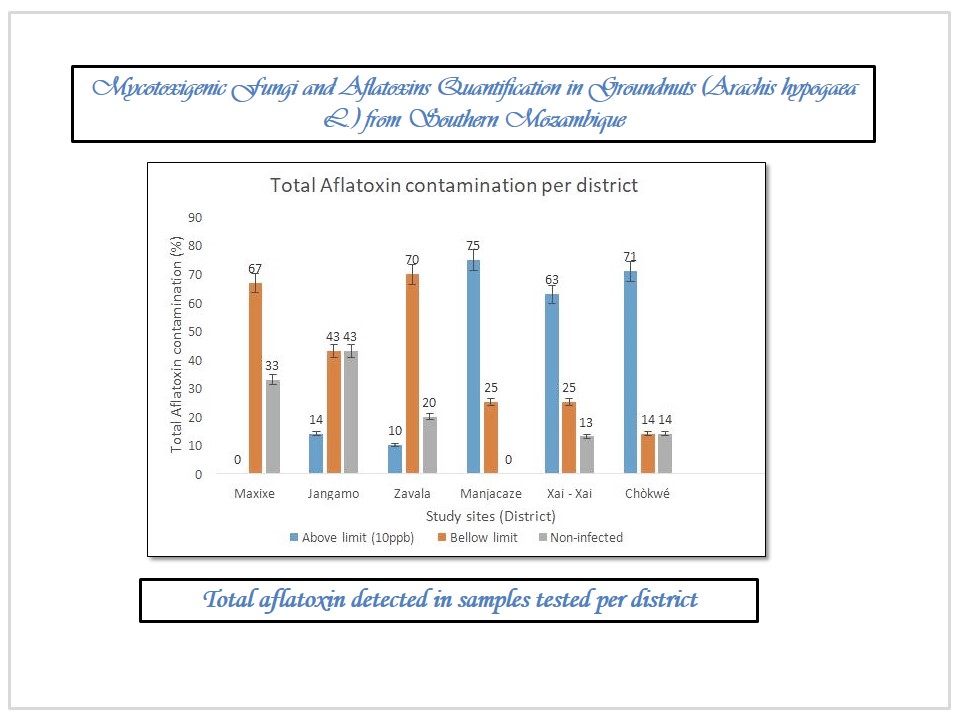Title
Mycotoxigenic Fungi and Aflatoxins Quantification in Groundnuts (Arachis hypogaea L.) from Southern Mozambique
Authors
Joao Bila,*ab Issufo Mustafa,a Amandio Muthambea and Ana Mondjanaa
aDepartamento de Proteccao Vegetal, Faculdade de Agronomia e Engenharia Florestal, Universidade Eduardo Mondlane, Maputo, Mocambique.
bCentre of Excellence in Agri-food Systems and Nutrition - CEAFSN, ACE-II, Maputo, Mozambique.
*Corresponding author E-mail address: jbilay@gmail.com (Joao Bila)
Article History
Publication details: Received: 24th October 2022; Revised: 21st December 2022; Accepted: 21st December 2022; Published: 26th December 2022
Cite this article
Bila J.; Mustafa I.; Muthambe A.; Mondjana A. Mycotoxigenic Fungi and Aflatoxins Quantification in Groundnuts (Arachis hypogaea L.) from Southern Mozambique. Green Rep., 2022, 3(9), 28-34.

Abstract
The present study aimed to evaluate the levels of fungal contamination and total aflatoxins levels in groundnut (Arachis hypogaea L.) grains harvested in the Southern Mozambique. Moisture content, fungi infection and levels of total aflatoxins (TAflt) were assessed. Moisture content was determined by the low temperature electric oven method. Fungal rate was analyzed using the blotter test method. ELISA test was used for the quantification of total aflatoxins levels. The observed moisture content was within the limits considered safe for groundnut storage (10%). The identified fungi were of the genera Aspergillus, Alternaria, Cladosporium, Fusarium, Macrophomina, Penicillium, Rhizoctonia and Rhizopus. Aspergillus flavus, Aspergillus niger, Rhizopus stolonifer, Penicillium sp., Fusarium verticillioides and Fusarium oxysporum were the most prevalent species. The fungi reported in this study are associated with the production of at least three important mycotoxins, namely: Aflatoxin, Fumonisin and Ochratoxin. About 83% of the analyzed samples were contaminated with TAflt, of which 38% below and 45% above the maximum allowable limit according to the Codex alimentarius (10 ppb). Gaza province registered the highest percentage of samples with TAflt above the codex maximum tolerable limit (10 ppb) ranging from 63% to 75%, while Inhambane province leaded the sample within the safety range (bellow 10 ppb). The risk factor was further elucidated with the average PDI values which ranged from 1.21 to 15.73 ng/kg Bw/day. The high prevalence of aflatoxigenic fungi detected suggests that if storage conditions deteriorate, aflatoxin levels may increase, leading to acute or chronic intoxication of the consumers.
Keywords
Aspergillus flavus; Aflatoxin; Fungi; Groundnut; Probable daily intake; Total Aflatoxin